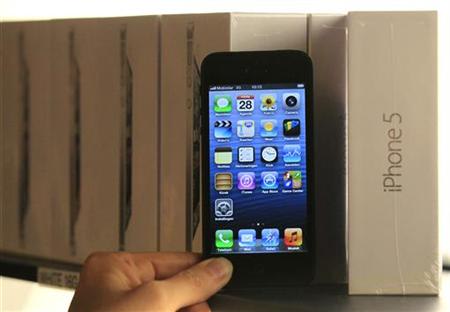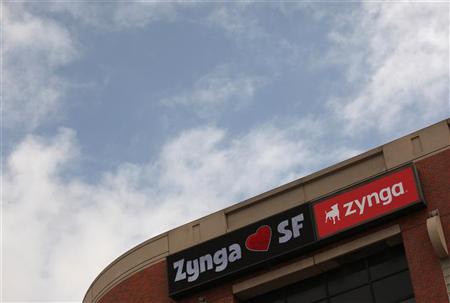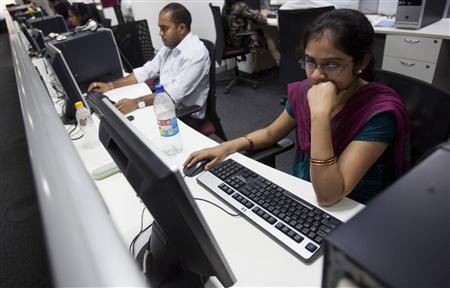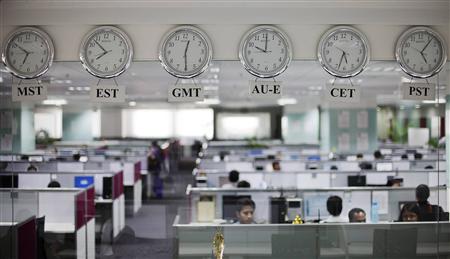BANGALORE (Reuters) - Shopping in a U.S. department store? Surveillance cameras may be watching, and not because you might be a shoplifter.
In minutes, video of which aisles you visited, what products you picked up and put down, what you bought and the displays that caught your fancy will be sent to a company in Bangalore, India.
"These logs can be analyzed to determine propensity to purchase, what a customer's intent, satisfaction, sentiment is," said Dhiraj Rajaram, CEO of Mu Sigma, which says it is among the world's biggest pure-play data analytics companies.
The business of storing, decoding and analyzing unstructured data - think video, Facebook updates, Tweets, Internet searches and public cameras - along with mountains of facts and figures can help companies increase profits, cut costs and improve service, and is now one of the world's hottest industries.
It's called Big Data, and although much of the work is done in the United States, India is getting an increasing slice of the action, re-energizing an IT sector whose growth has begun to falter.
One reason for the emergence of Big Data as India's next big thing in IT is the dramatic fall in the costs of storing and working with huge volumes of data with the advent of cloud computing and open-source software programmes such as Hadoop.
"There are hundreds of (analytics) boutiques in India right now. Every other week I hear some of my friends have started on their own," said Santosh Nair, who quit a job in an IT services provider four months ago to open Analytic Edge.
The Bangalore firm has studied pharmacy sales, population trends and other data to help a U.S. funeral company pinpoint areas for its marketing campaigns.
SERVICES NATION
Others are getting into the business of data storage and processing as costs plummet.
"It doesn't mean I need a server which has 50 terabytes of space. Cloud technology helps me rent space which is cheap," Nair said. "Ten terabytes of space might cost me about $500 a month. It's not expensive."
That amount of data is equivalent to about 20,000 hours of CD-quality music.
Globally, data output last year was estimated at 1.8 zettabytes - 1.8 billion terabytes, or the equivalent of 200 billion full-length high-definition movies.
Millions of networked sensors in cameras, mobile phones and other devices, along with spiraling output from social media sites, are contributing to the data explosion, said a report on Big Data last year by the McKinsey Global Institute.
This has great potential for businesses, it said.
"We are on the cusp of a tremendous wave of innovation, productivity and growth, as well as new modes of competition and value capture - all driven by Big Data as consumers, companies, and economic sectors exploit its potential."
As India stakes its claim in the knowledge-intensive business of Big Data, however, it stands to lose much of the cost advantage that helped it to dominate business-process outsourcing.
Instead, industry officials say, India's success will depend on its large numbers of maths-savvy IT engineers and the skills its IT industry has picked up over 15 years as the world's biggest outsourcing destination.
"The Indian cost benefit is eroding significantly," said Mahinder Mathrani, operating partner at the Symphony Technology Group, a Palo Alto, California-based private equity firm that is in the software and services field.
"In the big data analytics space, it will be more about talent arbitrage," he said. "Good statisticians who have a blend of business acumen and analytic skills and also technical aptitude aren't inexpensive, even in India."
POOL OF TALENT
India's pool of talent will be in demand, with data analytics specialists seen globally in short supply for years to come as Big Data takes off.
But the Indian industry also believes it will gain an advantage from its broader expertise in services.
"We are a services nation," said Sundararaman Viswanathan, a manager at Zinnov, a software consultancy in Bangalore. "For example, we had the Internet and we built the outsourcing industry around it. We are extremely good at it."
"We can build a service which is around asking the right questions, and putting together the insights and giving it to the customer."
India's National Association of Software and Services Companies (Nasscom) forecasts that the Big Data business in India will be worth as much as $1.2 billion within three years, a six-fold increase from current levels.
That would be double the growth rate it expects for Big Data worldwide: to $25 billion from $8.25 billion.
"It's an industry where, because of cost, skill, language and ability to learn, India stands a very, very strong advantage," said Rajeev Baphna, CEO of Bangalore-based data services company Analyttica.
"India started to focus on creating a space in this field by leveraging a number of advantages it has: One, talent; two, the ability to have a very strong process-driven delivery at lower costs that the services industry has mastered."
It's not just boutique firms that have entered the field. The giants of India's outsourcing such as Infosys Ltd and Wipro Ltd have also moved into the Big Data business, but smaller firms may be better placed to deliver.
"The larger, well-established companies have a challenge," said Symphony Technology's Mathrani.
"Their existing business models preclude them from being nimble. This is not about migrating work already being done somewhere else. It's about solving business problems for which no specification exists."
GROWTH IN OUTSOURCING
Globally, Big Data is used in a multitude of applications.
IBM Corp has a team of 5,000 crunching data to help oil companies find, extract and process oil more efficiently.
General Electric Co said in May it could spend up to $1.5 billion to acquire data analytics companies, aiming to mine multiple data points and find ways to extend how long gas turbines, jet engines and other heavy equipment can run without unscheduled maintenance.
In retail, the scope of Big Data is enormous. McKinsey has estimated that a retailer using Big Data to the full, including trends from social media such as Twitter and Facebook, can increase operating margins by more than 60 percent.
Healthcare, insurance, banking and other financial services are also big users.
For India's IT industry as a whole, the surge in Big Data comes at an opportune moment.
India's exports of software and IT services, which make up the outsourcing industry, should grow 11 to 14 percent to $77 billion to $79 billion in the year ending March 2013, according to Nasscom. But this is a tapering off from 20-plus percent growth a few years ago.
In addition, outsourcing and offshoring in the financial industry - about 30 percent of the total - has come under fire and will likely face stricter supervision after recent lapses involving offshore units in India.
These include accusations by the New York State banking regulator in August that Standard Chartered Plc hid $250 billion in transactions with Iran and that the entire foreign asset compliance process of its New York branch was outsourced to Chennai, India, with no evidence of any oversight or communication between the Chennai and New York offices.
In Big Data, however, while the revenue numbers are still small, the mood is upbeat.
"We think this is just the tip of the iceberg," said Rajaram at Mu Sigma. "The world is only going to change faster and faster and faster. There will be more data, more algorithms, more applications, more new technologies."
His eight-year-old company is growing rapidly, and the average age of his 2,000 staff is about 25 or 26, he said.
"It's like hiring a bunch of Tony Starks, train them on the Iron Man Suit and they go out and defeat the bad guys." (Editing by John Chalmers and Edmund Klamann)










